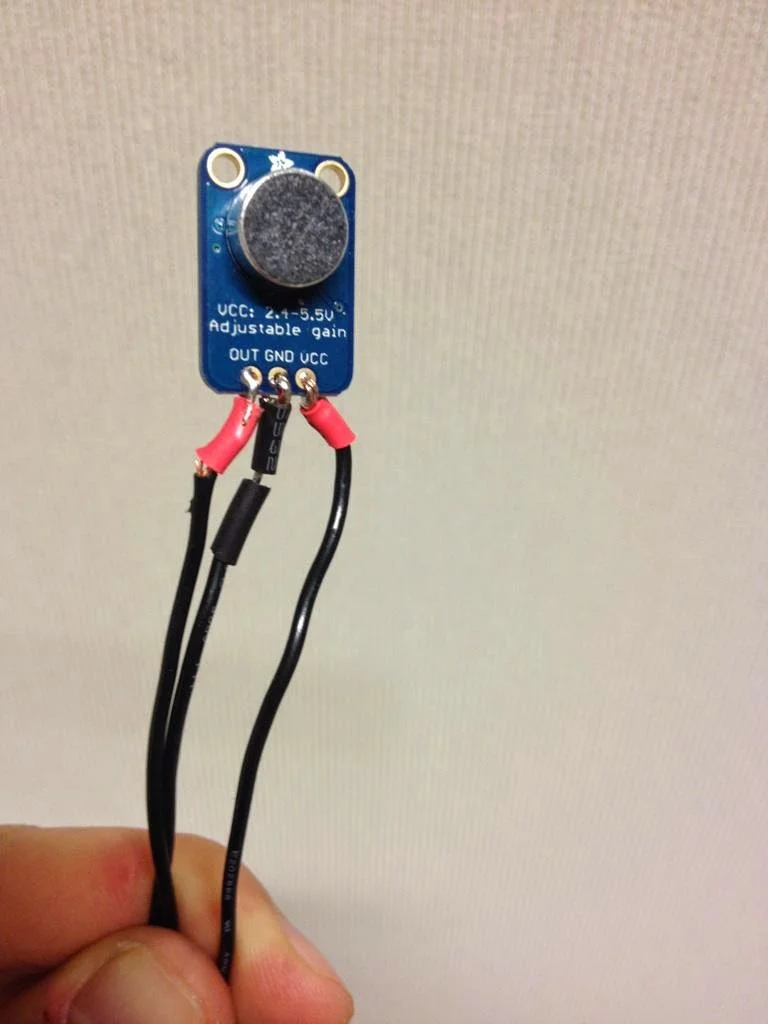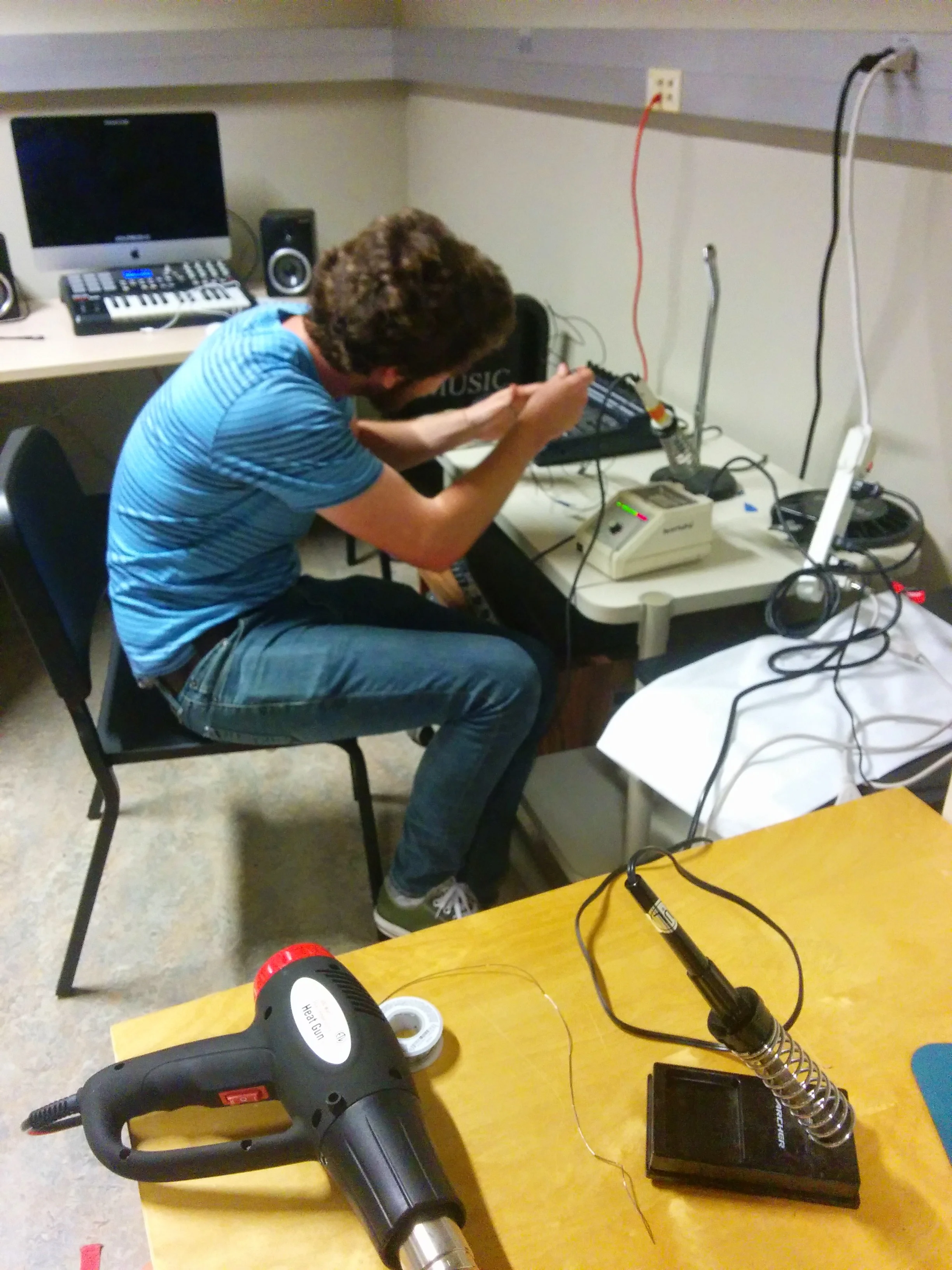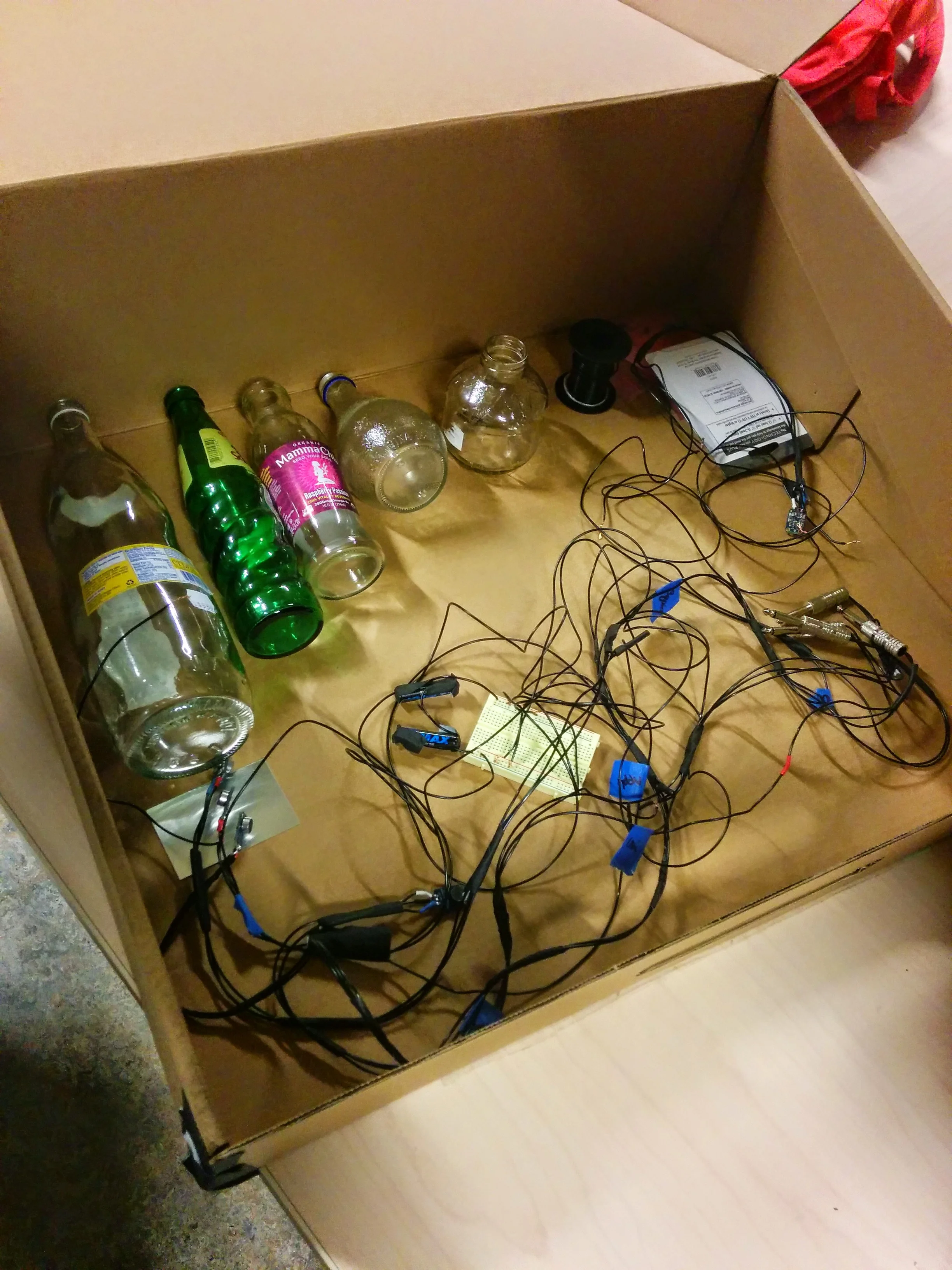← Back to Projects
Bottle Resonance
Tasked to create a musical instrument, we used resonance from microphones placed inside glass bottles to create tones that could be adjusted by covering/partially covering the opening of the bottle
The Process
Each microphone creates a positive feedback loop with the speaker that is placed a distance away from the bottles. The frequency from the feedback of each of the bottles are determined by the shape and length of the bottle. The bottles can be “played” by tapping the bottles and partially covering the openings which change the frequency a semitone down.
When the opening is left open, the sound waves in the bottle are working in a situation where the boundary conditions are “fixed” (the bottom of the bottle) and “free” (the opening of the bottle). When partially covering the opening of the bottles, some of the waves that are bouncing against the walls of the bottle are acting in a fixed-fixed boundary condition causing the feedback output to be about a semitone lower than when left open.
All microphones were powered together by wiring two AAA batteries in parallel to the microphones by using a breadboard to create nodes for the positive (VCC) and negative (Ground) ends of the batteries. The quarter-inch connector was then plugged into a mixer with the other four microphones, which was then connected to a computer using Ableton Live. Each microphone input had a track on Ableton to adjust the gains of the frequencies. The frequency could then be put through low pass filters to get a clearer tone from the feedback signal or add any distortion/other effects.
My role was getting the electric components and wiring together all the parts into a working instrument.


Wiring Diagram
Basic diagram to show how the microphones were wired to the power source and to the 1/4” connector. All other mics were also connected similarly in parallel.

Work Table
Stripping wires and soldering ends!

Electret Microphone
All wired up!

1/4" connector
Wired to connect the microphones to the soundboard

New Skills!
I taught one of my group members how to solder!

Ableton Live
Our settings for each bottle (labeled by the the drink that each one used to hold)

First Arrangement of Bottles
The spacing of the bottles and their distance from the speaker affect the tones from positive feedback from the microphones












